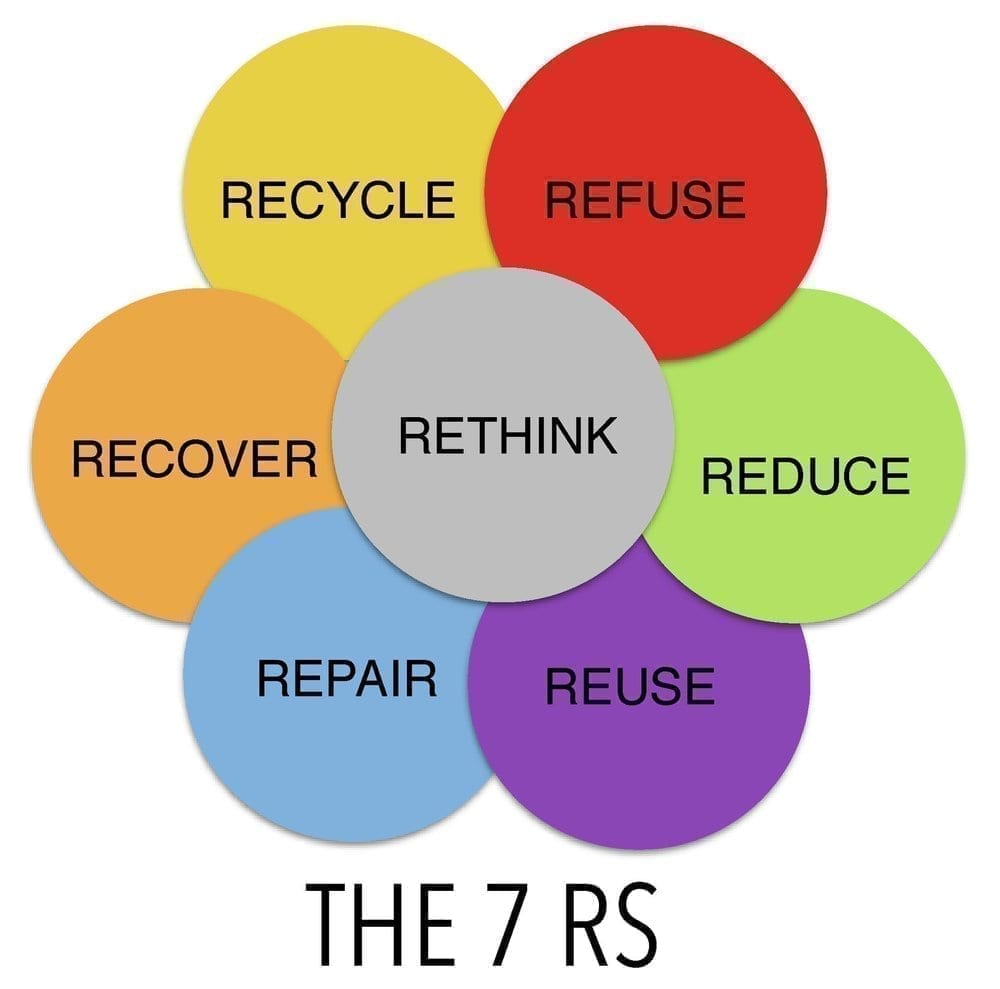By Hildur Palsdottir
Earthrise, the 1968 iconic photograph captured in space of our blue planet rising above the moon’s surface, is likely the most influential environmental image to date. Yet it now competes with the more recent images of Earth ridden with plastic pollution on land and sea. These photos highlight that our planet is now home to plastic islands gathering in ocean gyres and tropical island communities used as first world dumping grounds. Just viewing these pictures insists on large-scale behavioral changes.
It is estimated that 882 billion pounds of plastic are produced annually, with more than half of it for single use only. A full 80 percent of plastic ends up in landfills and natural settings (ocean, waterways), with less than 10 percent of plastic efficiently recycled. The rest is burned up in incinerators while emitting pollutants. In response to this, Break Free From Plastics has launched an annual Choose to Refuse Single Use Plastics Campaign. Its goal is to have a Plastic Free July, see https://www.plasticfreejuly.org.
While visible plastic pollution is where the problem is most obvious, a much bigger problem is that plastic breaks down into microscopic pieces (microplastics, nanoplastics) that are incorporated into animal tissues. Microplastics are detected in most human fluids by now and even in our excrement. In a small study, researchers from the Medical University of Vienna and the Environment Agency Austria found an average of 20 particles of plastic per 10 grams of stool.
Nature Geoscience recently published a study in which scientists recorded the rate of 365 microplastic particles per square meter falling from the sky in the remote Pyrenees Mountains in southern France. Last year the Journal Environmental Science and Technology documented that humans may be consuming anywhere from 39,000 to 52,000 microplastic particles a year. This does not even take into account the microfibers from synthetic textiles (polyester, nylon, acrylic), which we inhale from household dust. When at nanoscale, plastic pieces are small enough to enter our bloodstream, cells and tissues.
Dr. Natarajan Chandrasekaran and his team at Vellore Institute of Technology study how nanoplastic aggregates obstruct blood flow. It’s well-documented that certain plastic additives are carcinogenic and can act as endocrine disruptors, negatively affecting the nervous system and immune function. We are far from understanding the health risks and consequences of internal nanoplastic pollution.
Considering that we’re eating, drinking and breathing our own trash, it seems reasonable to rethink production, distribution and use of plastics and synthetics.
What’s worse, it’s not just the physical pollution that is happening to our planet. If the plastic industry were a country, it would be fourth in line as the world’s largest CO2 emitter behind China, the United States and India.
Maybe you’re already aware of how fossil fuels, fracking and cracking connect petroleum to plastic. The natural gas industry facilitates cheap and easy plastic production. In cracking facilities natural gas liquids are converted to ethylene, out of which packaging, bottles and synthetic clothing is made. Also, be aware that “bioplastics” are often fossil-fuel based — a term that is misleading. Finally, polyester is also made from petroleum. Most of the litter on our Long Island beaches stems from microfibers shed when we wash synthetic clothing (polyester, acrylic, and nylon).
In an effort to identify the companies responsible for pollution, we must document the brands commonly found as litter. In beach cleanups the producers most often recognized as responsible for plastic pollution are Coca-Cola, Nestle, Unilever and PepsiCo. We must hold them accountable. If you’re interested in performing beach cleanup brand audit, here are the instructions: https://www.breakfreefromplastic.org/brandaudittoolkit/
You can be a citizen scientist and document microplastic pollution in your area: https://nurdlepatrol.org/Forms/Home/ and https://microplasticsurvey.org
There’s a lot more you can do to be part of the solution:
You can refuse to purchase non-essential single use plastics.
You can choose natural materials instead of synthetics (cotton, linen, hemp, rayon, silk).
You can add Lint LUV-R or Filtrol 160 septic protector lint filter to your front-load washing machine. Wash only full load (cold water) on lowest revolution number. Air dry!
You can watch: The Story of Plastic, A Plastic Ocean, Plastic Paradise and Bag It: Is your Life too Plastic?
And last, but not least:
You can demand corporate responsibility through your elected officials. Please read here the details on The Break Free From Plastic Pollution Act https://beyondplastics.org/article/the-break-free-from-plastic-pollution-act/
Although special interests remain resistant to change, the plastic lobby better watch out for Judith Enck, president of Beyond Plastic and former EPA regional administrator, who confidently testified July 7 before the House Committee On Oversight and Reform’s Subcommittee On Environment. The briefing was called “Plastic Production, Pollution and Waste in the Time of Covid-19: The Life-Threatening Impact of Single Use Plastic on Human Health.” Here’s the link to an important recording https://beyondplastics.org/article/judith-enck-testifies-before-house-committee-on-oversight-reform/



